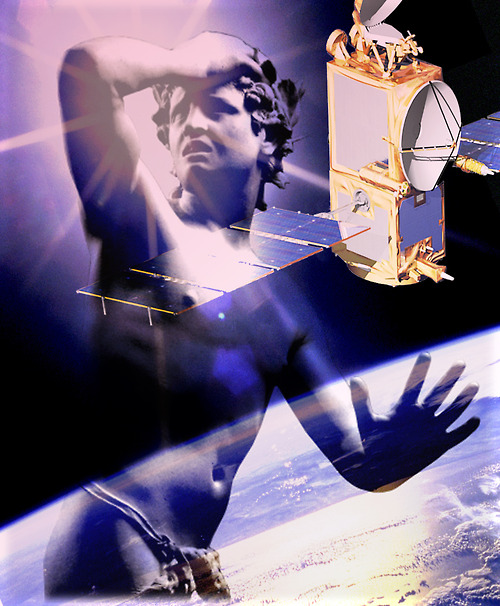
When Orpheus’ beloved Eurydice dies, he cajoles his way into the underworld with his musical charms and his lyre. Wanting her but not her shade, he cannot forbear looking back to physically see her and so loses her forever. In this modern day Orphean tale, an anonymous narrator also desperately searches for a lost love. Rather than the charms of the lyre, contemporary technological tools, Google Street View and Google Earth, beckon as the pathway for our narrator to regain memories and recapture traces of his lost love. In the film, they are as captivating and enthralling as charming as any lyre in retrieving the other: at first they might seem an open retort to critics of new technology who bemoan the lack of the tangible presence of the other in our interactions on the Internet.
Our narrator remembers that once, with her back turned while facing the Adriatic Sea, a Google Street View car drove by and took a picture of his beloved, who detested being photographed, without her realizing it. Our narrator cherishes this photograph and the entire relationship becomes encapsulated in the screen capture replacing all other experiences and memories. Soon it is not enough. Our narrator cannot imagine that, in a world where everything is recorded, that someone could completely disappear. In daily systematic searches for photographs of the nameless other, Google Street View and Google Earth allow him to move seamlessly through vast detailed three-dimensional space. This extraordinary geographical and social exploration is favored by Google satellite images, user-created 3D renderings of Stonehenge and Machu Picchu and Street View panoramas of favorite vacation spots. As an undifferentiated series of cultural, historical and contemporary symbols float together or follow one another in rapid succession, in a world where Dutch anthropologists discover pre-Socratic fragments on Turkish islands, perhaps we come to wonder as to the significance of anything and the place of tradition and history itself. Unlike Orpheus, our narrator is not seeking for his lost love but for photos of his love, he yearns for records of the relationship not the woman herself or the relationship itself. In the ultimate irony when he returns to the original photograph, it has been removed. By getting as close to possible to the world through technology, has our narrator not unwittingly distanced himself from this world? But maybe even more than a doomed quest, does not this whirlwind tour of an individual’s personal history and the world’s cultural history, this modern tale of loss, retrieval and loss again, expose that the change in our consciousness has preceded the change in our technology?
“Wherever I go, there I am” is the old adage, be it Yogi Berra or the Buddha. The detached gaze of a satellite image or an automatic Street View camera confronts a human consciousness whose ability to seek connectedness and meaning has already been compromised. Contemporary technological tools simultaneously open and close vistas on our inner and outer worlds.
-- ARTIST'S DESCRIPTION FROM "STATE"

JON RAFMAN FOR PRESIDENT 2012!!!!!
AIDS-3D FOR EMPEROR [size=200]∞[/size]